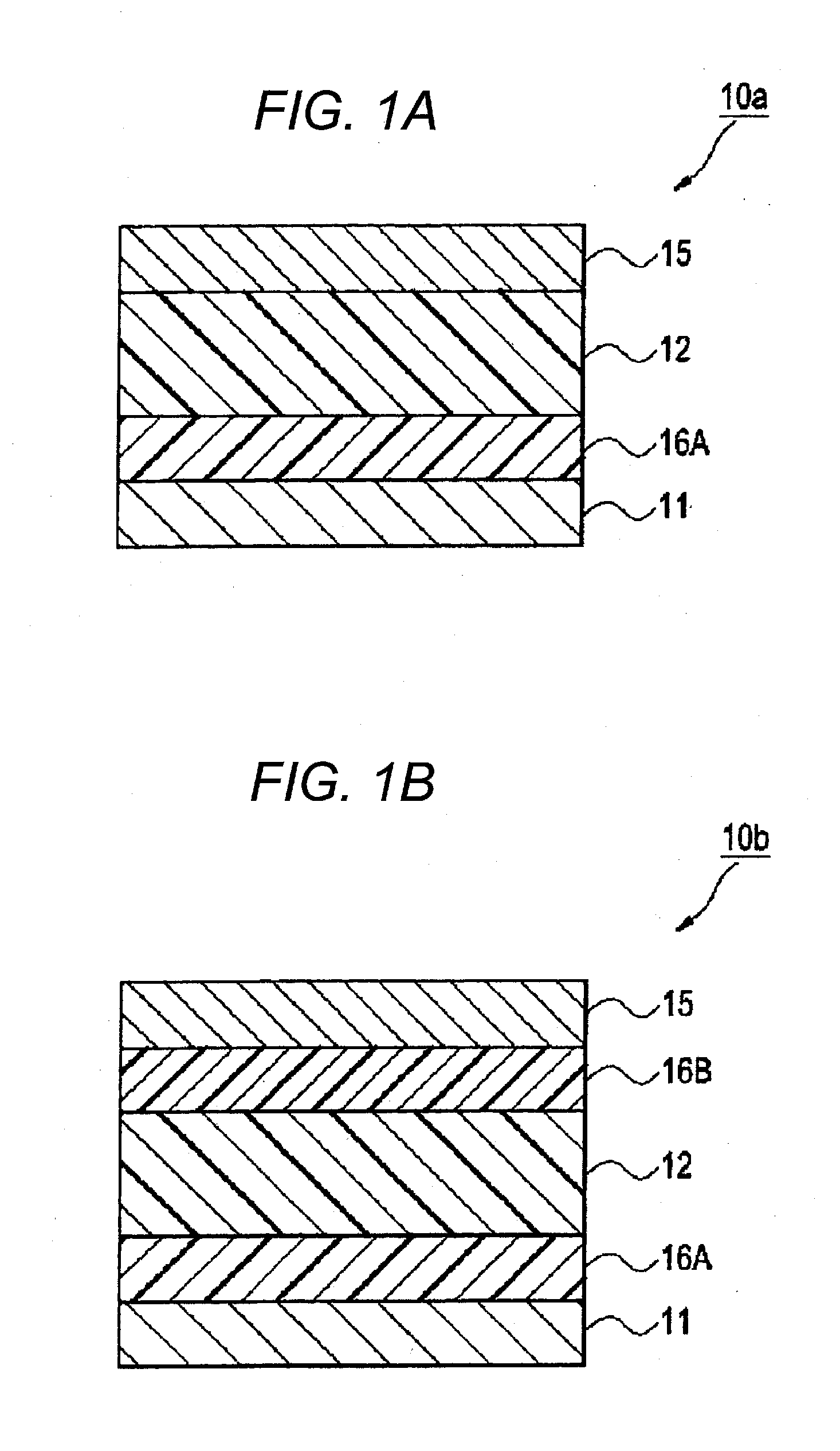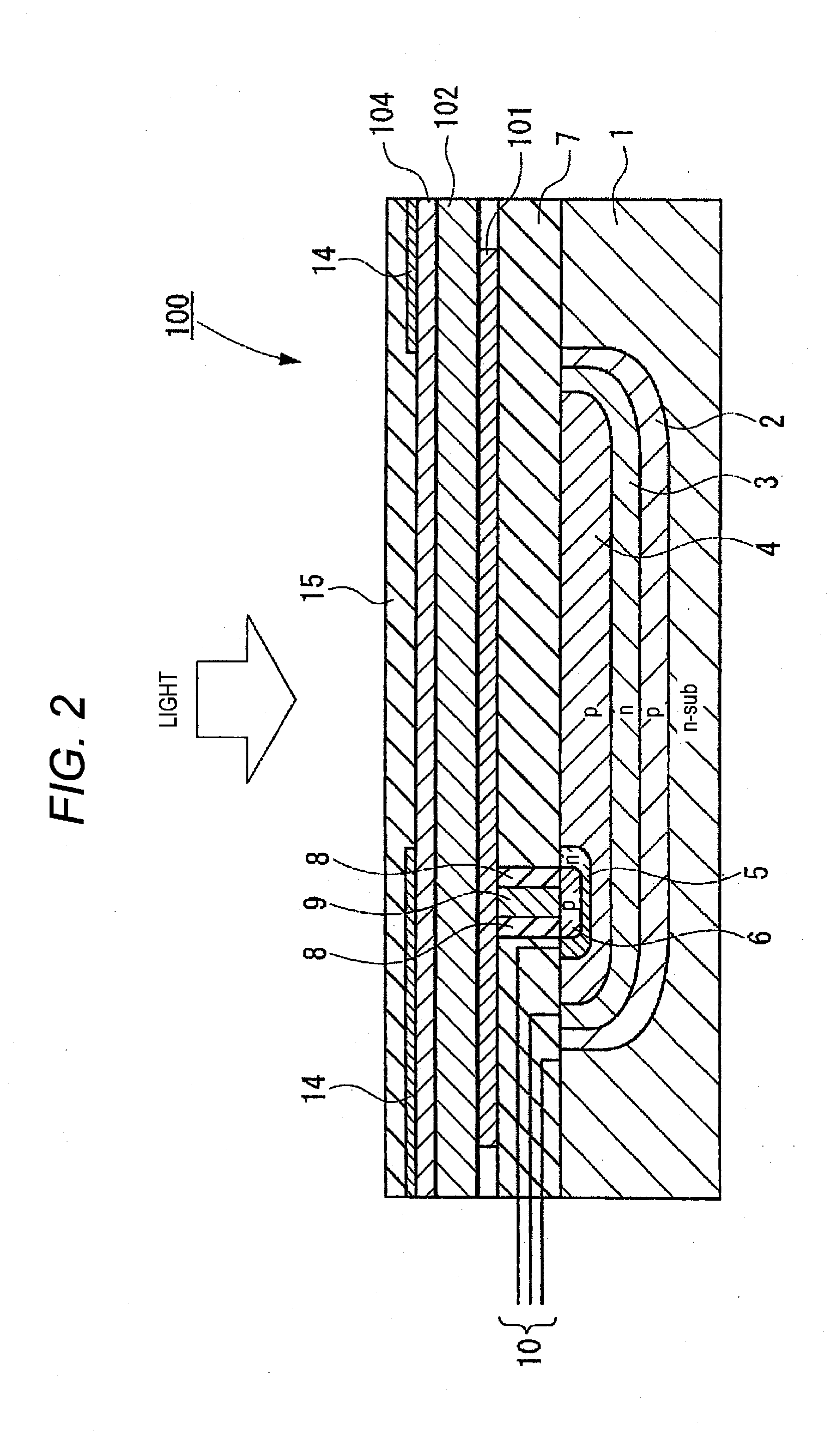Photoelectric conversion device, photoelectric conversion device material, photosensor and imaging device
a conversion device and photoelectric technology, applied in the field of photoelectric conversion devices, can solve the problems of reducing the aperture ratio and the reduction of the light collection efficiency, and the failure of light to transmit through the color filter, and achieve the effect of excellent photoelectric conversion efficiency
- Summary
- Abstract
- Description
- Claims
- Application Information
AI Technical Summary
Benefits of technology
Problems solved by technology
Method used
Image
Examples
example 1
Synthesis of Compound (5)
[0242]
(Synthesis of Compound 5a)
[0243]2,5-Dibromothiophene (produced by Tokyo Chemical Industry Co., Ltd.) (3.0 ml) was dissolved in 100 ml of dehydrated THF, and the solution was adjusted to an inner temperature of −78° C. in a dry ice bath. Subsequently, 19.2 ml of n-BuLi was slowly added dropwise and after 5 minutes, 5.1 ml of dehydrated DMF was gradually added dropwise. Thereafter, the dry ice bath was removed, and the inner temperature was raised to room temperature. After adding 2 N HCl, extraction with ethyl acetate was performed, and the oil layer was washed with 1 N HCl and aq. NaCl, then dried over sodium sulfate and filtered. The obtained reaction mixture was separated on a silica gel column (developing solution: AcOEt / n-Hexane=1 / 4), and the solvent was distilled off to obtain 1.3 g of Compound (5a).
(Synthesis of Compound 5B)
[0244]Compound (5a) (1.0 g), 1.8 g of diphenylamine (produced by Tokyo Chemical Industry Co., Ltd.), 3.4 g of cesium carbona...
example 2
Synthesis of Compound (8)
[0251]Compound (8) was synthesized by the same synthesis method as that for Compound (5) except for changing diphenylamine to 1,2′-dinaphthylamine (produced by Tokyo Chemical Industry Co., Ltd.).
[0252]A solid-state imaging device was fabricated in the same manner as in Example 1 except for changing Compound (5) in the photoelectric conversion layer 12 to Compound (8).
example 3
Synthesis of Compound (18)
[0253]Compound (18) was synthesized by the same synthesis method as that for Compound (5) by using 2,5-dibromothieno[3,2-b]thiophene (produced by Tokyo Chemical Industry Co., Ltd.) as the starting material. The compound was identified by 1H-NMR.
[0254]1H-NMR (CDCl3) δ: 6.65 (1H, s), 7.26-7.43 (10H, m), 7.65 (2H, m), 8.00 (1H, s), 8.07 (2H, m), 8.23 (1H, br), 8.39 (2H, d).
[0255]Molecular weight: 513.63
[0256]The peak wavelength of the absorption spectrum and the molar extinction coefficient thereof were determined by the same operation as in Example 1, as a result, the peak wavelength of the absorption spectrum was 536 nm and the molar extinction coefficient at this wavelength was 94,000 M−1cm−1.
[0257]A solid-state imaging device was fabricated in the same manner as in Example 1 except for changing Compound (5) in the photoelectric conversion layer 12 to Compound (18).
PUM
 Login to View More
Login to View More Abstract
Description
Claims
Application Information
 Login to View More
Login to View More - R&D
- Intellectual Property
- Life Sciences
- Materials
- Tech Scout
- Unparalleled Data Quality
- Higher Quality Content
- 60% Fewer Hallucinations
Browse by: Latest US Patents, China's latest patents, Technical Efficacy Thesaurus, Application Domain, Technology Topic, Popular Technical Reports.
© 2025 PatSnap. All rights reserved.Legal|Privacy policy|Modern Slavery Act Transparency Statement|Sitemap|About US| Contact US: help@patsnap.com



